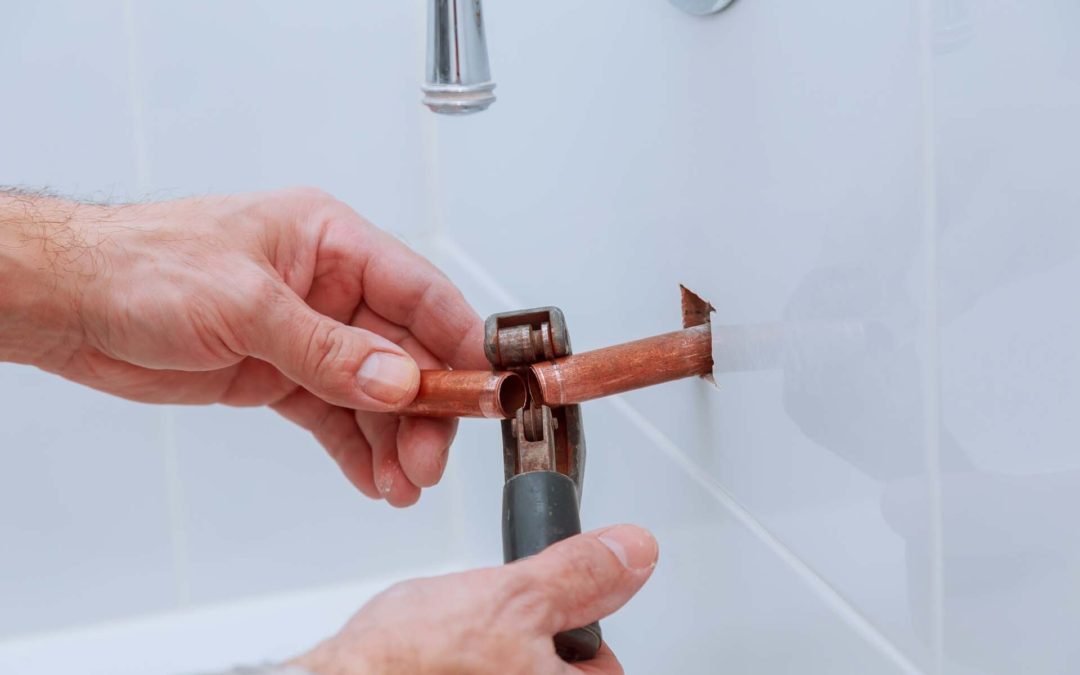When you live in a home for a while, chances are you’ll need repiping done at some point. You may have also bought or inherited an old home that needs renovations including repiping.
Alternatively, your pipes could be leaking, failing or bursting. These situations can happen in new homes or old homes depending on a number of factors.
Changing out plumbing pipes can be a daunting and stressful task for homeowners—especially if you’re not familiar with it or what the process entails.
What is Repiping in Plumbing?
Repiping is the process of getting rid of old plumbing piping in your home and replacing it with new piping to better serve your household.
It is a complete replacement of your whole plumbing system including your cold and hot water lines. However, it does not typically include replacing the drainage or sewer line system.
6 Reasons Why You Need to Repipe Your Home
There are many reasons for a repiping to be done. Older homes may need it done due to aging material used in the homes or faulty materials used years ago. Additionally, some newer homes may need repiping because of a leak or catastrophe with the current plumbing system.
1. Your House Is Older
This is likely the most common reason your home needs new piping. If your home was built in the 1970s, your pipes are now over 50 years old and need replacing.
In this time, your pipes have aged and possibly started the erosion process—regardless of the type of piping that was installed. This is especially true of galvanized steel pipes, which were typically used during the 70s. These are more prone to erosion than other types of pipes.
It’s also important to note that replacing lead piping in older homes is an even more pertinent task due to the risk of lead poisoning.
2. Low Water Pressure
If you notice lower water pressure in your home, then it’s most likely a piping issue. For instance, galvanized piping can build up as it ages and will close off water flow in your plumbing.
3. You Notice Leaking
When you see a leak in your home’s plumbing or notice water damage, it’s likely an indicator of a larger problem. It may be a small isolated leak that can be fixed without a full repiping project being done. However, it’s better to check out the extent of the problem first.
If it turns out to be a bigger issue, replacing all of the plumbing rather than piece by piece can avoid additional issues in the future.
4. Discolored Water
No one wants to think about their drinking or bathing water being discolored or contaminated—but it does happen. This can be a sign of rusty pipes or sediment buildup within the plumbing.
In either case, it’s better to be safe than sorry and get new piping in your home as soon as possible.
5. Faulty Piping
Issues with piping don’t just come from erosion or aging, they can also be a result of poor craftsmanship or faulty materials. If a plumber does an installation wrong, this will cause issues later on down the line.
But in terms of faulty piping, there are materials that have been proven to be poor materials and have since been recalled. If you have Kitec or Polybutylene pipes, then you’re likely to either be a victim or soon-to-be a victim of these recalled materials.
6. Aging Copper Piping
While copper piping is the most commonly used piping and has been the gold standard, it too has limitations. As copper piping ages it will develop a bluish-green oxidation on it. Copper piping tends to last a range of between 15 to 50 years depending on which kind your home has.
Copper piping marked with an “M” should be replaced every 15 years, “L” is 25 years and “K” is 50 years. Each kind also has certain colored lines stamped on it with red, blue and green respectively.
How is Repiping Done?
The whole process of repiping is a straightforward process that can be done very efficiently over the span of a week in most cases. The process includes:
- Plumber Inspection and Planning: The plumber will come in and inspect the issue to determine what needs to be done. Then they will start to plan out their approach.
- Preparations: After inspecting the problem, they will have a better idea of what areas will be directly affected and those affected by proxy. For example, gaining access to the piping in walls requires cutting into the walls which produces dust, therefore, your furniture and other surfaces may need to be covered beforehand.
- Plumber Access: The plumber will begin gaining access to the piping in the walls, ceilings or underneath your home.
- Repiping: Old piping is taken out and replaced with the new plumbing system.
- Final Inspection: All of the new piping is tested and someone comes in to inspect. This ensures that the project has been completed properly.
- Cleanup: After everything has been done and inspected, the cleanup process can begin and walls can be patched up.
Repiping and More From a Virginia Plumbing Expert
Having trouble with your piping system? Mike Wilson Plumbing will come out and take a look for you in Chesterfield, Midlothian, Woodlake or Richmond. Whether it’s a small leak or a catastrophic-sized issue requiring a full repiping project, you’ll be taken care of.
Call us today to get more information or schedule an appointment.

